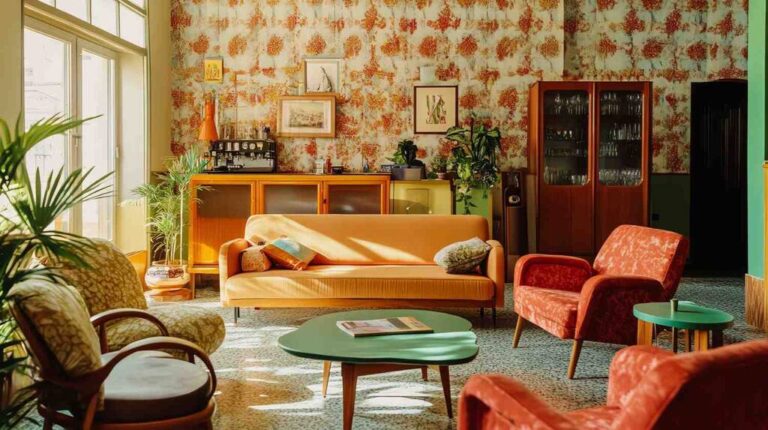In this blog, I’ll dive into the captivating world of retro-futurism interior design—a style that fuses the optimism of the past with the sleek innovation of the future.
Ever wondered what would happen if the bold aesthetics of the 1960s met the technology-driven dreams of tomorrow? Whether you’re looking to infuse your home with space-age charm, mid-century modern curves, or vibrant neon accents, I’ll explore how to bring this imaginative aesthetic to life.
Get ready to step into a future imagined by the past.
The Origins of Retro-Futurism
Retro-futurism as a concept is deeply rooted in the way past generations envisioned the future.
In the 1960s, when space exploration was at the forefront of global imagination, designers and architects began to translate these ideas into interiors.
It was an era of utopian dreams, technological advancements, and a fascination with the unknown.
During this time, designers like Eero Saarinen introduced iconic furniture pieces such as the Tulip Chair, which seemed to defy gravity with its fluid, pedestal-like form.
It was during this decade that the term “retro-futurism” was officially coined, describing this fascinating paradox of nostalgia and progress.
Today, in an age of artificial intelligence, virtual reality, and digital experiences, retro-futurism has evolved yet again.
The Design Language of Retro-Futurism
The essence of retro-futurism lies in its ability to blend vintage aesthetics with futuristic innovation. The forms, colors, and materials work together to create an interior that feels like a sci-fi dream brought to life.
A defining characteristic of this style is fluidity. Furniture and décor pieces avoid harsh angles, opting instead for rounded silhouettes that feel soft yet futuristic.
Sofas curve like waves, coffee tables resemble polished pebbles, and armchairs take on bubble-like shapes that look as though they belong in a spaceship.
Metallic surfaces play a crucial role in adding a futuristic edge to the aesthetic.
Chrome, stainless steel, and brushed aluminum reflect light, creating a space that feels sleek and high-tech.
These cool, reflective finishes are often balanced with warm, tactile materials like plush velvet, rich leather, or even soft-hued plastics, ensuring that the space doesn’t become too sterile or impersonal.
The contrast between the coldness of metal and the warmth of textured fabrics is what gives retro-futurism its unique, layered appeal.
Colors From Retro Futurism Style
Color plays a vital role in setting the tone of a retro-futuristic space. Unlike traditional mid-century interiors, which often lean toward warm earth tones, this style embraces a bolder, more adventurous palette.
Deep Shades
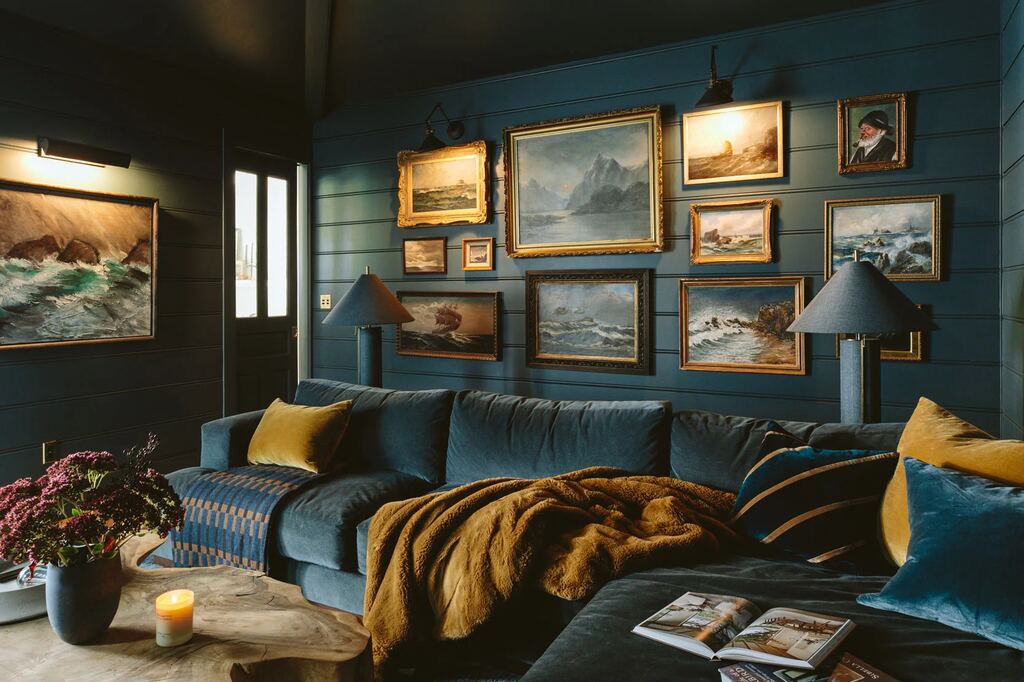
Deep blues, shimmering silvers, and iridescent whites often serve as the base colors, evoking the feeling of being inside a high-tech space station.
These cool tones are then accented with vibrant hues like electric pink, neon green, or cosmic purple, reminiscent of glowing cityscapes and digital landscapes.
Pastel Shades
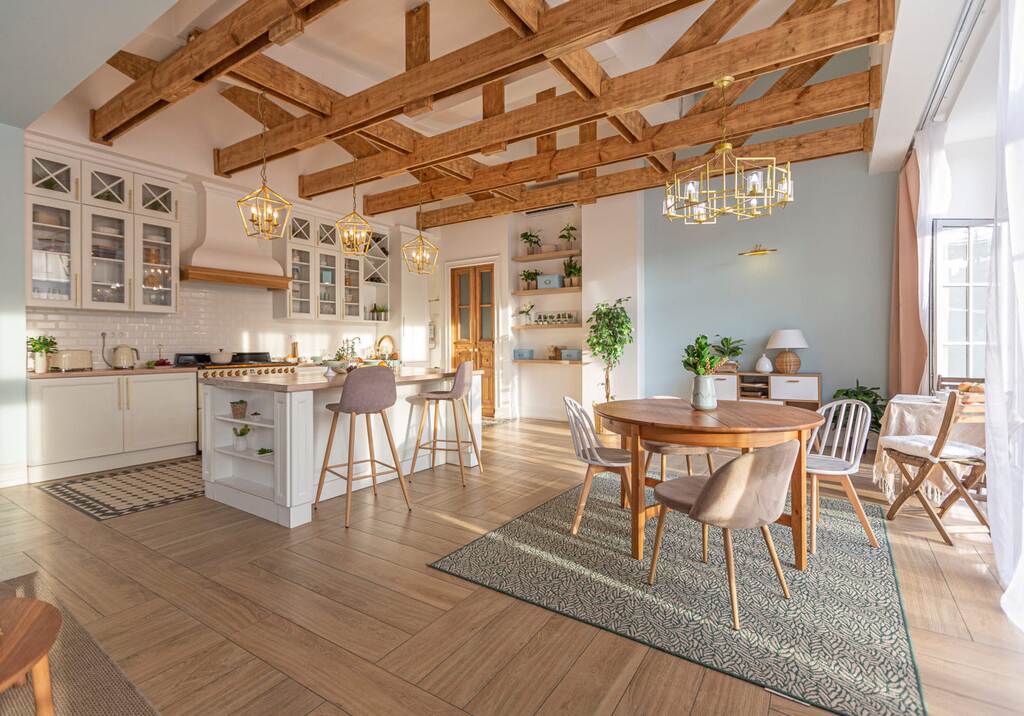
Pastel shades also find their place in this aesthetic, softening the overall look and adding a dreamlike quality.
A combination of muted lavender, powdery sky blue, and warm peach creates an environment that feels both futuristic and inviting, striking a balance between boldness and serenity.
Texture Styles
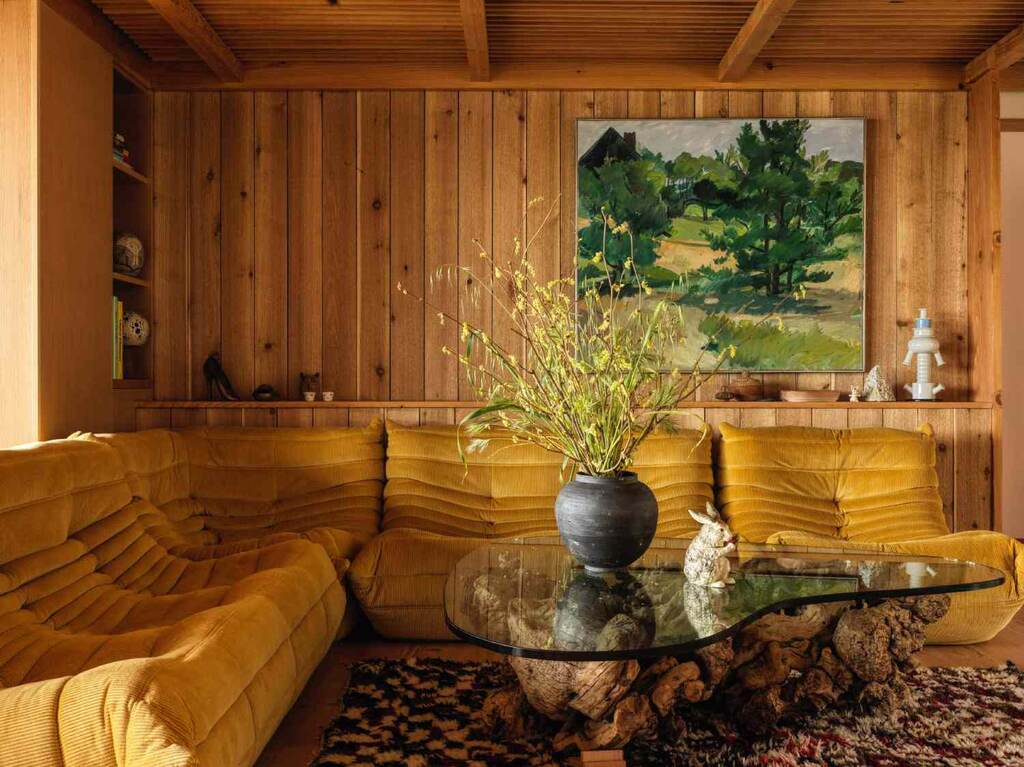
Textures within this style can be just as dynamic as the color choices.
While sleek surfaces like glass, polished metal, and acrylic contribute to the futuristic feel, softer elements like fuzzy area rugs, quilted upholstery, and even playful shag carpeting add a touch of vintage charm.
The mix of hard and soft, glossy and matte, bold and subdued keeps the space visually engaging and full of depth.
Bringing Retro-Futurism Into Your Home
Creating a retro-futuristic interior is all about layering elements that feel both nostalgic and forward-thinking. The key is to strike a balance between past and future, incorporating iconic vintage designs with modern, high-tech touches.
Living Room
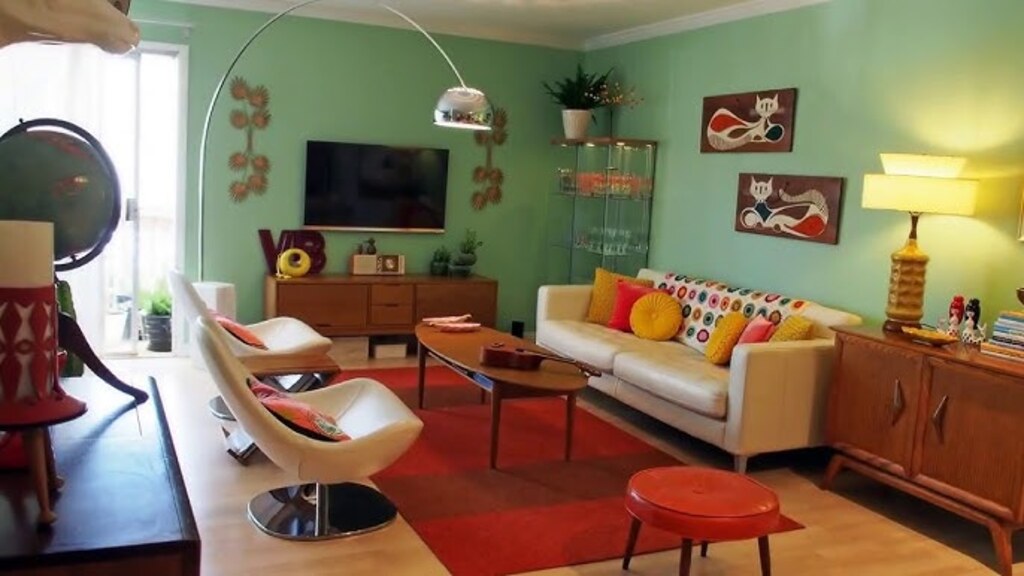
In a living room, a curved modular sofa in a bold color can act as the focal point, paired with a sleek glass coffee table that seems to float above the floor.
A chrome-finished floor lamp with an oversized dome shade can provide ambient lighting, while neon wall art adds a touch of digital-era energy.
Vintage arcade machines or retro-styled speakers can serve as fun nods to past visions of the future, blending effortlessly with contemporary smart home technology.
Bedroom
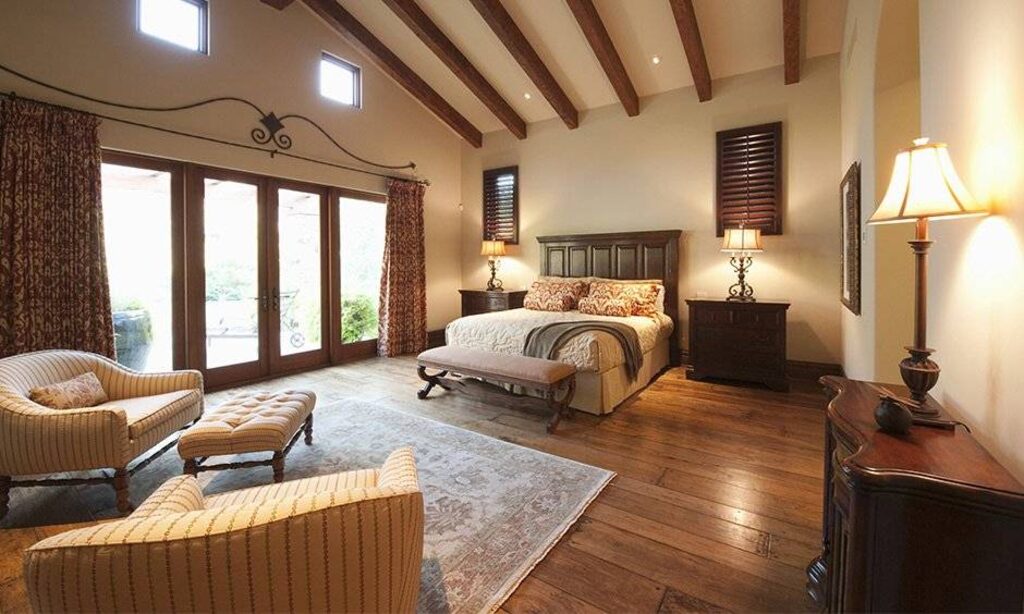
A bedroom designed in this style might feature a floating bedframe with an illuminated base, giving the illusion of weightlessness.
Walls could be adorned with abstract, futuristic artwork, while soft, iridescent bedding adds a hint of cosmic luxury.
A voice-activated lighting system, programmed to shift between cool blues and warm ambers, would allow the room’s ambiance to change depending on the mood.
Kitchen and Bathroom
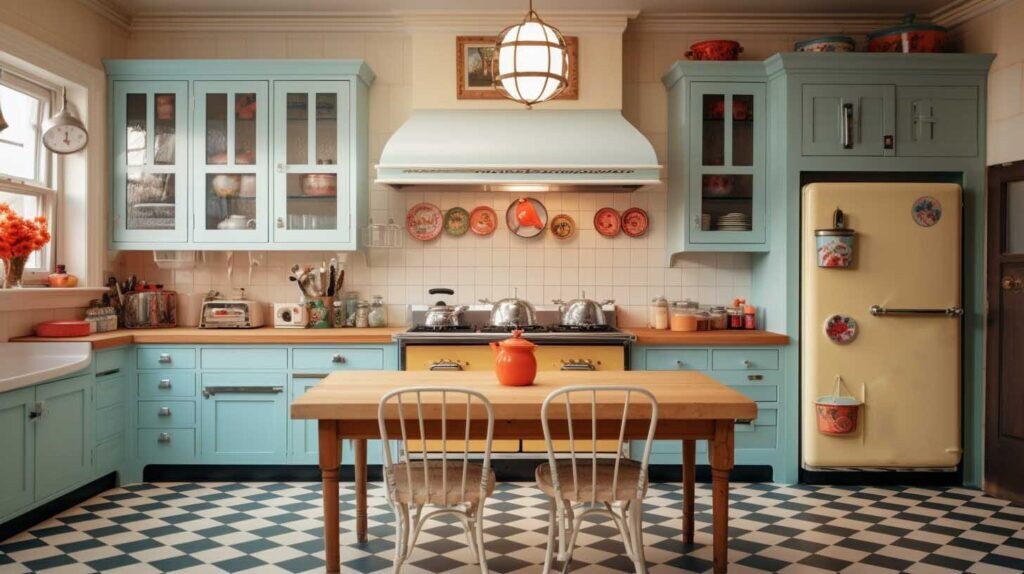
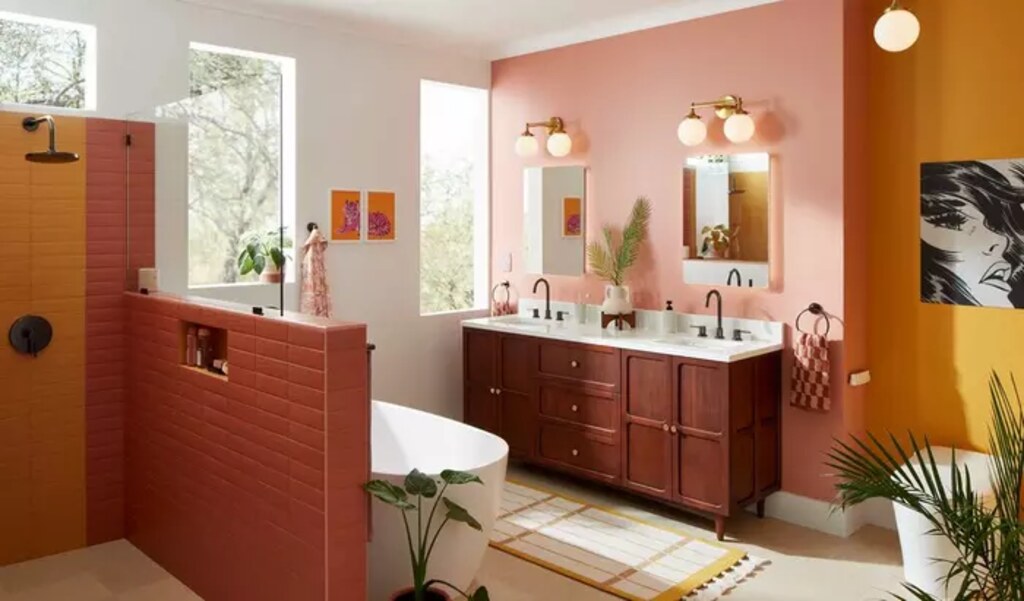
Even kitchens and bathrooms can embrace retro-futuristic elements.
Sleek, handle-free cabinetry in high-gloss finishes can pair beautifully with chrome or stainless steel appliances, while futuristic lighting fixtures—such as LED-lit mirrors or glowing under-cabinet strips—add a dramatic touch.
In a bathroom, a circular mirror with a built-in neon glow can transform an ordinary vanity into a sci-fi-inspired statement piece.
The Timeless Appeal of Retro-Futurism
What makes retro-futurism so captivating is its ability to remain both nostalgic and forward-thinking at the same time.
It is a design style that plays with time, imagining what the future could look like while still paying homage to the optimism of past decades.
In today’s world, where technology advances at an unprecedented pace, retro-futurism offers a comforting escape—a way to embrace modern innovation while still feeling connected to the warmth, excitement, and creativity of past eras.
It is a celebration of bold imagination, a reminder that the way we envision the future is constantly evolving.
Whether you choose to fully immerse yourself in this aesthetic or simply incorporate a few key elements into your home, retro-futurism is a style that invites playfulness, creativity, and a sense of wonder.
It is about designing a space that feels like a dream of the future, seen through the lens of the past.
Conclusion
Retro-futurism is a captivating blend of nostalgia and innovation, bringing past visions of the future to life in a bold and imaginative way. It’s more than a design trend—it’s a storytelling medium that merges sleek, space-age aesthetics with warmth and playfulness. By embracing this style, you create a home that feels both familiar and futuristic, proving that the future is as stylish as we dare to dream.
FAQs
What is retro-futurism in interior design?
Retro-futurism in interior design combines vintage aesthetics with futuristic elements, blending mid-century nostalgia with space-age innovation to create a unique, time-bending style.
What colors define retro-futuristic interiors?
Bold, high-contrast hues like neon blues, deep purples, and metallic silvers mix with warm mid-century tones like mustard yellow and burnt orange to create a striking balance.
How can I add a retro-futuristic touch to my home?
Incorporate curved furniture, glossy or metallic finishes, neon lighting, and playful sci-fi-inspired decor to bring retro-futurism to life in your space.
Is retro-futurism a long-lasting trend?
Yes! Retro-futurism continually evolves, adapting to new technologies and design influences while keeping its nostalgic yet forward-thinking charm.
Can retro-futurism work in small spaces?
Absolutely! Sleek, curved furniture, reflective surfaces, and smart lighting can make small spaces feel futuristic, airy, and visually dynamic.

